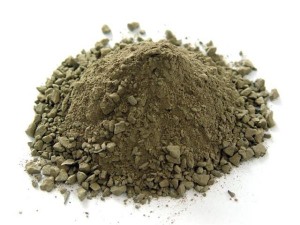Corrosion Loss Mechanism of Rammed Lining in Submerged Arc Furnace
In the production of ferroalloys, especially the lining of medium and low carbon chromite hot furnaces, the length of its life directly affects the production efficiency and production cost. Therefore, it is necessary to understand the corrosion mechanism of the lining material, so as to effectively prevent or delay the corrosion of the material. The basis for ensuring production. For medium and low carbon ferrochromium linings using ramming material bottom materials, the detailed corrosion mechanism is as follows:
1. The erosion rate of the furnace bottom of the ramming material depends on the physical and chemical properties of the ramming material, the basicity of the slag, the operating temperature, and the action time. FeO liquid phase gradually appeared, and CaO formed calcium ferrite, which started to sinter. C2F (calcium ferrite) initially dissolved in a small amount in the periclase lattice to form a solid solution, which promoted the sintering of the material. When the furnace bottom temperature exceeded 1435 degrees Celsius, C2F (calcium ferrite) decomposes, the liquid FeO is gradually absorbed by periclase to form a (Mg·Fe)O solid solution, CaO forms a calcium-rich liquid phase or forms C2S with SiO2, and the original material changes from MgO plus C2F to RO solid solution plus C2S The ceramic phase completes the sintering process.
2. The upper layer of the furnace bottom is the working layer, and the slag acts on this working layer. Due to the entry of a lot of CaO and SiO slag, the enrichment zone of C2S is formed, which is beneficial to improve the refractory function of the furnace bottom and inhibit the siliceous phase. Erosion. When the CaO\/SiO2 in the ramming material is 0.931.87, the reaction generates CMS-C3MS2, and the layer belt moves down; when the furnace bottom temperature drops to 400500 degrees Celsius, PC2S (2 calcium silicate)-7C2S occurs (2 calcium silicate) phase change, accompanied by 12% volume expansion, the structure of the working layer (ie the corrosion layer) is loose, white powder, and the bottom of the furnace is lowered. In addition, the medium and low carbon ferrochrome lining should be prevented Hot stop in the middle.
3. Corrosion layer, under the action of high temperature, liquid slag invades between periclase grains, gradually dissolves the surface of periclase, and forms a low-temperature CMS-C3MS2 cemented phase, which reduces the high-temperature function of the material. Under the action of high-temperature heat, The furnace bottom is gradually ablated and corroded, and the furnace bottom descends, which shortens the life of the furnace lining.
The service life of medium and low carbon ferrochromium furnace linings should exceed 300 days, and the corrosion mechanism of ramming materials should be grasped. According to the erosion conditions of various parts of the furnace lining, different brands of ramming materials should be used to build composite furnace linings to resist the erosion of slag and iron, and make the furnace The bottom has good sinterability and high temperature resistance, and then achieves the purpose of extending the life of the furnace lining.

Previous: What are the main reasons for the damage of ladle breathable bricks?
下一条: A brief introduction to what materials are needed for ventilation bricks
Related Industry Knowledge
- Features and Benefits of Coil Clay
- What are the advantages of a good furnace lining
- Misunderstandings in the use of ramming materials in intermediate frequency furnaces
- Phenomenon analysis of failure of argon blowing of ladle permeable bricks and how to improve the rate of argon blowing
- Where is the consumption reduction and energy saving of breathable bricks reflected?
- How to improve the service life of intermediate frequency furnace lining
- Reasons for damage to intermediate frequency furnace lining and how to solve them
- The performance and advantages of breathable brick
- Analysis of Structural Characteristics of Dispersive Breathable Bricks
- The intermediate frequency furnace charge knotting process needs to pay attention to details sharing
- What are the main reasons for the damage of ladle breathable bricks?
- What is the effect of excessive aggregate particles in the lining of the intermediate frequency furnace?
- 5 benefits of using dry ramming mixes
- Precautions for knotting of intermediate frequency furnace lining
- The intermediate frequency furnace ramming material itself is to maintain the furnace and coil
- Ladle breathable brick refractory castable construction method
- How to grasp the selection skills of intermediate frequency furnace charge?
- Describe the characteristics of the ramming material
- Advantages of Coil Clay
- How to improve the temperature resistance of the intermediate frequency furnace lining?


